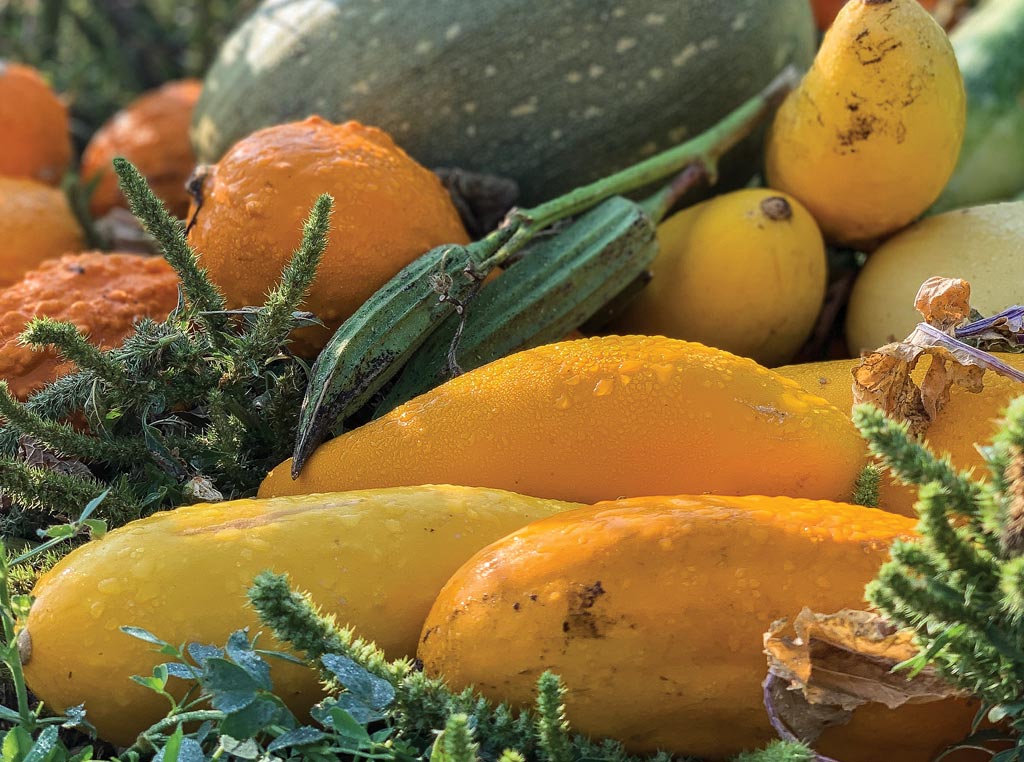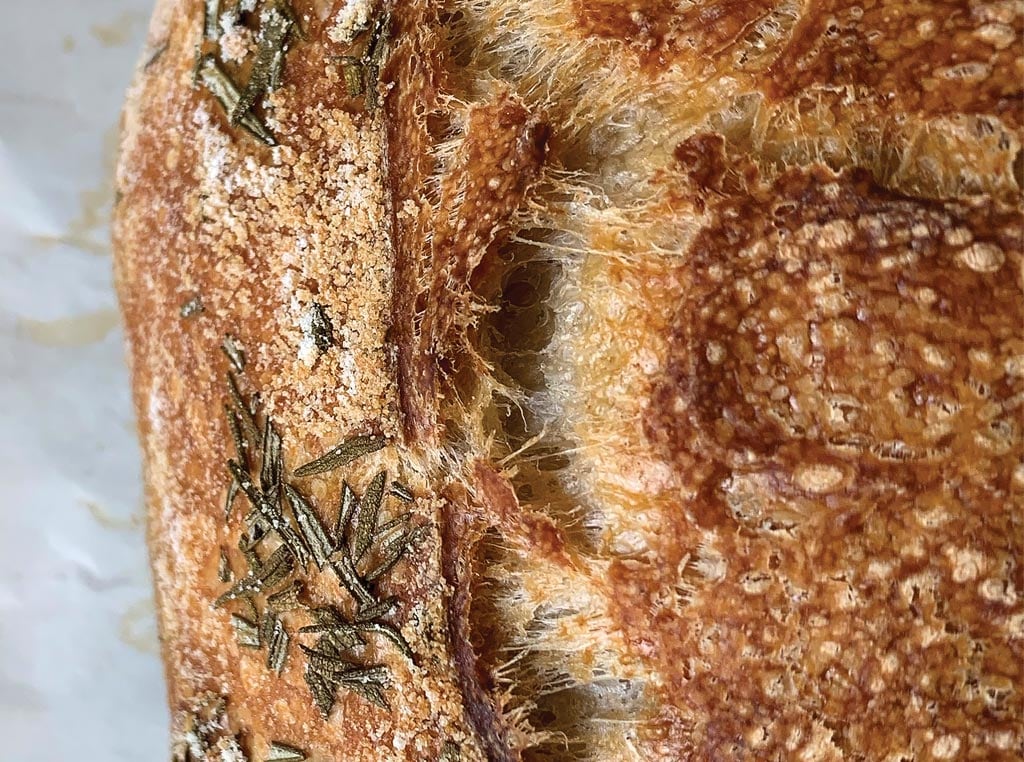
Agriculture, Specialty/Niche April 01, 2021
Another Rise
The new age of sourdough.
Making bread is a tradition as old as any. Throughout much of history, our ancestors either made unleavened or sourdough—meaning it was slowly leavened with naturally occurring yeasts. That changed in the 1800s when commercial yeast was introduced. Bakers could now turn out well-risen loaves much faster.
It changed again in 2020 when the world slowed down due to the COVID-19 pandemic.
“I got sent home from the office, and I needed something to focus myself, something that took skill,” says Erin Sutherland, photographer from Alexandria, Va.
Sutherland remembers her dad making Amish friendship bread and gifting off the extra starter for years during her childhood and has tried her hand at various bread styles and baking other foods since starting her own family. “I immediately thought I should start that sourdough starter I’ve always dreamt about.”
“I recently read a novel by my favorite author: Sourdough by Robin Sloan. And thought, this is what I need to do!”
She was captivated by the author’s portrayal of the bread in the 2017 novel, a combination of “magic and technology and Silicon Valley culture.”
Sutherland was not the only one with this thought.
Sourdough quickly rose in popularity after people bought grocery stores out of ready-made bread, along with cleaning supplies and toilet paper, when they were first required to stay home. Internet searches for “sourdough” went up 83% between February and April 2020, according to Google Trends.
Rush on flour. “I was confused last year when the sourdough craze took off,” says Debbie Grossman, music and theater arts professional from Takoma Park, Md. “There was a rush on flour and then yeast. I’ve been making bread for 30 years, and suddenly everyone else decided to start!”
Grossman’s family has been making sourdough bread with starter her father got during a business trip to San Francisco in the 1970s.
“It is vintage starter. Before giving it to us, my father’s colleague’s grandmother had been using it since the 1940s, and the bakery where she got it likely started it long before that,” Grossman says proudly.
She took an offshoot when she moved to Toronto in the 1980s and has kept it alive with each subsequent move.
“It even came with us in one of my children’s sippy cups when we moved to England for my husband’s post-doc. That was after there were limitations on liquids, but kids’ milk was exempt. I was prepared to drink some of the starter, if necessary!”
Grossman had never thought of her family’s starter as anything extraordinary before.
“Baking is just a thing we do in our family, and sourdough is just part of that,” Grossman says.

Tending to sourdough starter takes patience and finesse. It needs to be at the right temperature to become active. Then, proofing the dough—or letting it rise—requires more of the same. It can take two days to make a properly risen loaf.
Getting started. “People wanted to start baking sourdough because the starter is the yeast,” says Amanda Paa, recipe developer from Hudson, Wisc.
Paa has a gluten intolerance and started experimenting with sourdough a few years prior because the fermentation process reduces the gluten proteins in the bread and makes it more digestible for some people with sensitivities.
“I developed a few recipes around sourdough, and they’ve been on the blog for a couple years. But then, everyone was talking about sourdough,” she recalls. “This was a really great time to help people learn, because it’s very different than making regular bread and can cause some real panic.”
She started posting tutorials on her blog, heartbeetkitchen.com, and social media pages.
“Knowing when the dough is properly proofed takes the longest to get the hang of,” she says. She was getting messages at all hours of the day and night from followers asking if their dough looked right.
“I tell people it is a practice in patience. I felt like I was making a difference, seeing their joy from creating and eating their sourdough for the first time and then hearing how much it filled their soul at a time when everything felt so unstable.”
Proofing the dough may be difficult, but getting the starter actually started is even trickier, as Sutherland quickly realized.
“I found a starter recipe that looked easy to follow. And I made Doris,” Sutherland explains. She happened to name it after a great aunt. “Doris didn’t start out very well. The recipe didn’t mention to remove some before feeding it. Within three days, I ended up with a gallon of Doris that wasn’t bubbling.”
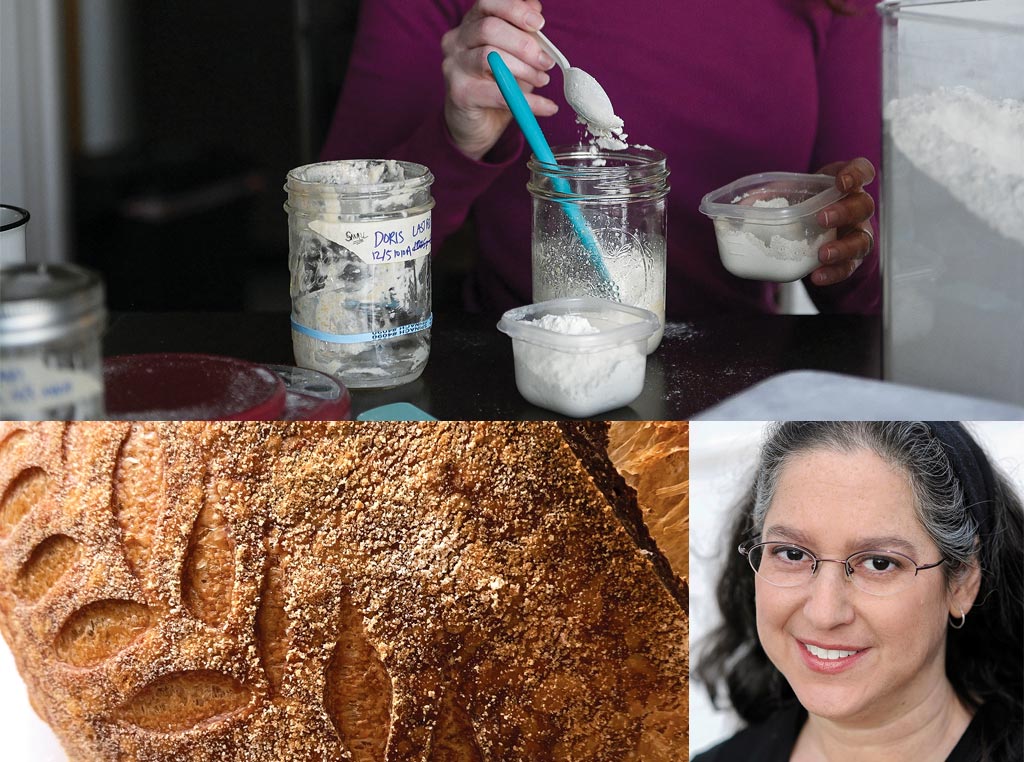
Above, clockwise from top. Erin Sutherland feeds her two starters, one with half whole wheat and half all-purpose flour and the other with only all-purpose flour. Debbie Grossman has been making sourdough with vintage San Francisco starter since the 1970s. Shaping and scoring sourdough loaves is an acquired art.
She scooped out a small amount and started over. She tried many tricks found online, like putting it in the oven with just the light on.
“Well, my oven has a standard bulb that makes it about 95 degrees. Doris separated into liquid and sludge with no bubbles. I basically cooked her. She was dead, and I was devastated.”
Luckily, Sutherland had saved her “discard” and could try again. “I reset it as though I was starting over, and I just left it out for 36 hours. Then, Doris sprang to life on my birthday!”
Since then, Sutherland acquired another starter, named Beatrice after another great aunt, and bakes something nearly every weekend.
Paa started dehydrating her starter, named Nida after her grandmother, so she could ship it to followers all over the world, hoping they don’t have the rocky start Sutherland did. She sold more than 1,000 starters in less than 12 months.
“In December, orders took off again. I think people were both in quarantine again and really needing something to do during winter,” she says.
Now that she isn’t competing for flour anymore, Grossman encourages anyone to make sourdough.
“It’s great, but only if you have time and dedication because it is a living thing. You have to feed it regularly, and you have to use it regularly.”
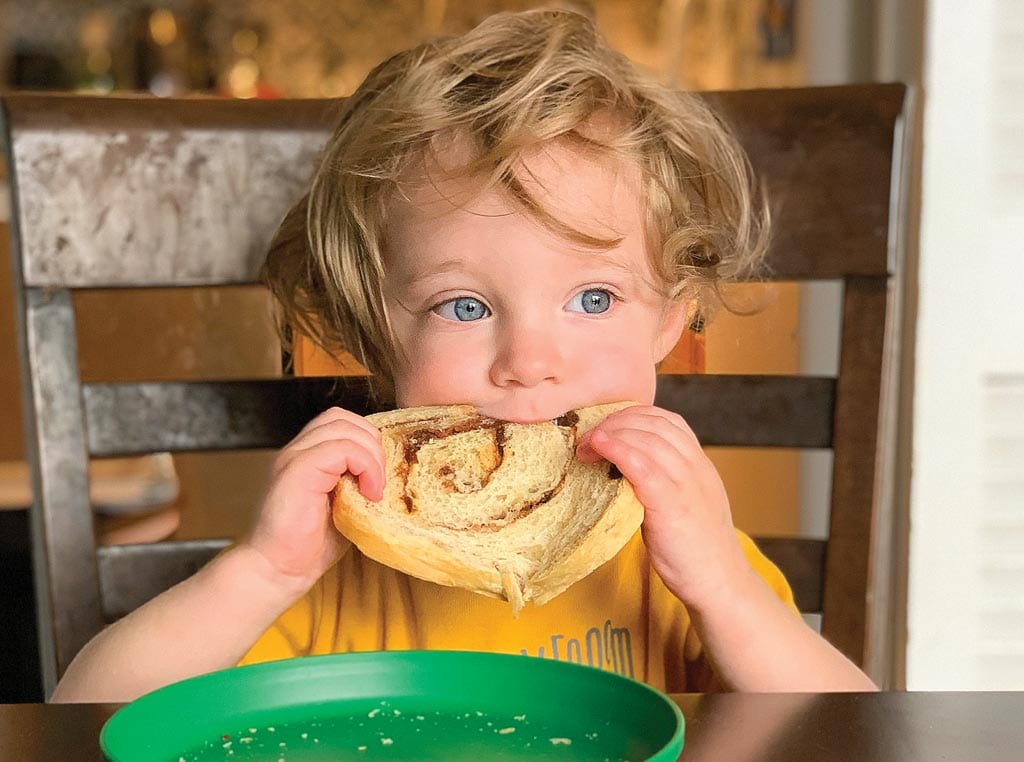
Erin Sutherland’s son, Zachary, enjoys cinnamon raisin sourdough bread that Erin and her daughter, Margo, made during one of her numerous weekend bakes. Photos were submitted by Sutherland and Grossman.
Read More
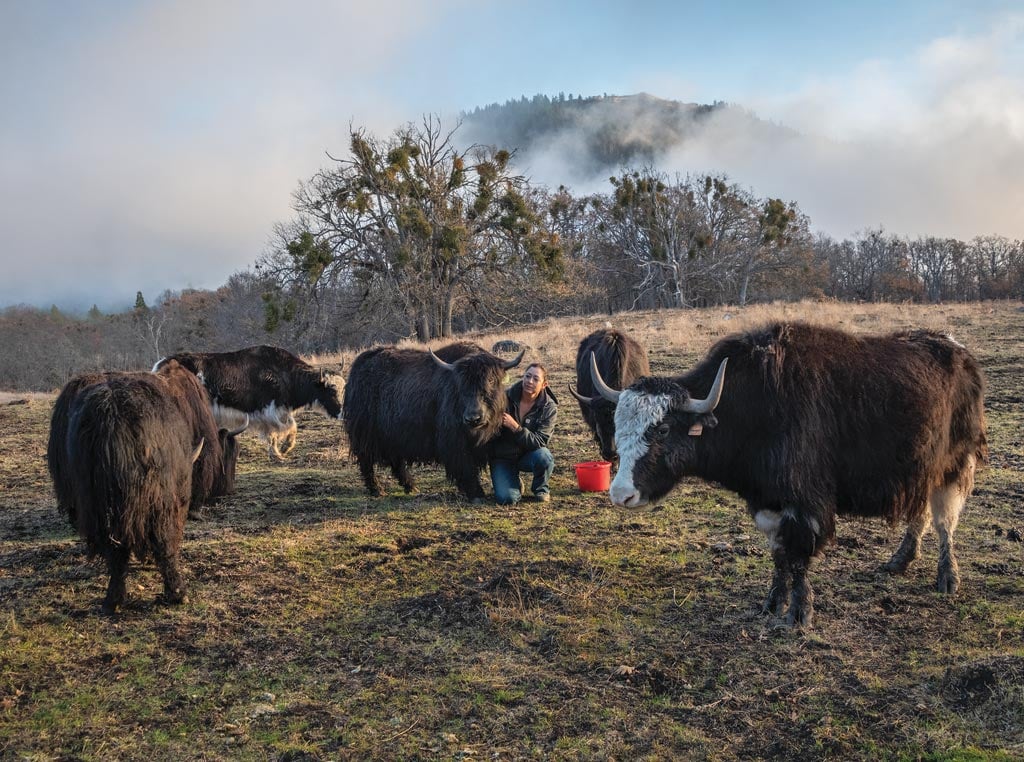
Agriculture, Livestock/Poultry
A Whole Different Rodeo
Farmers wrangle alternative livestock.

